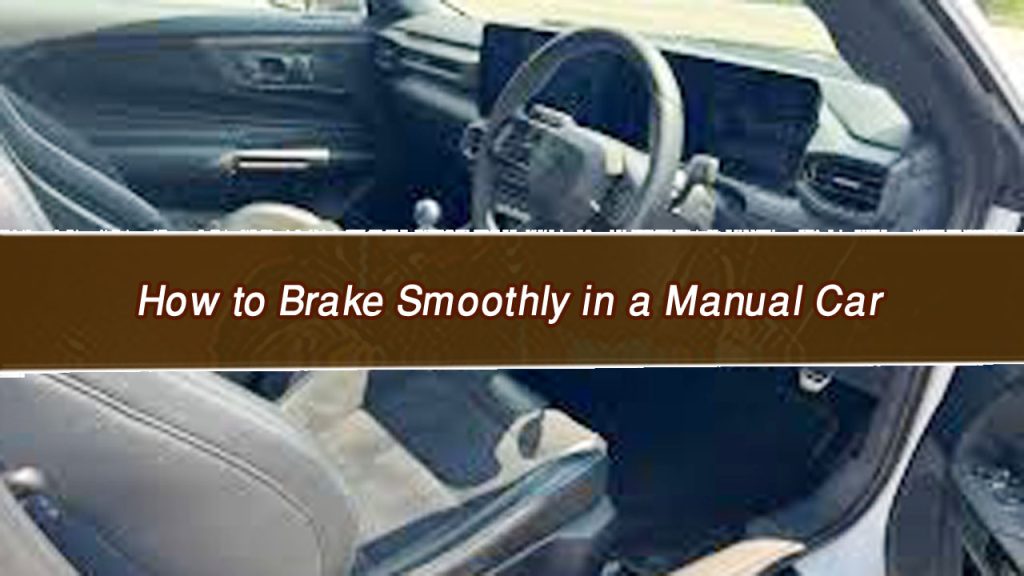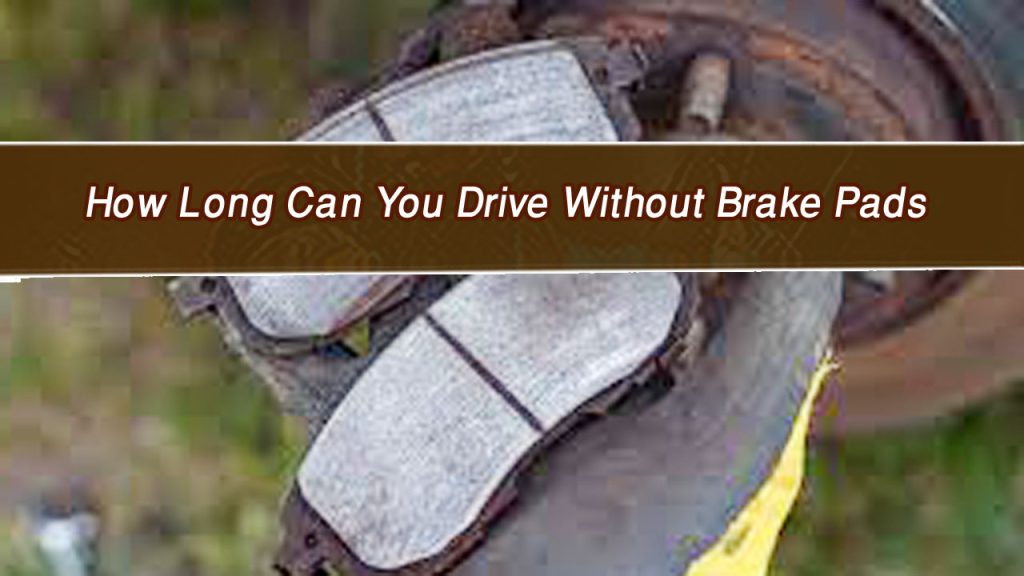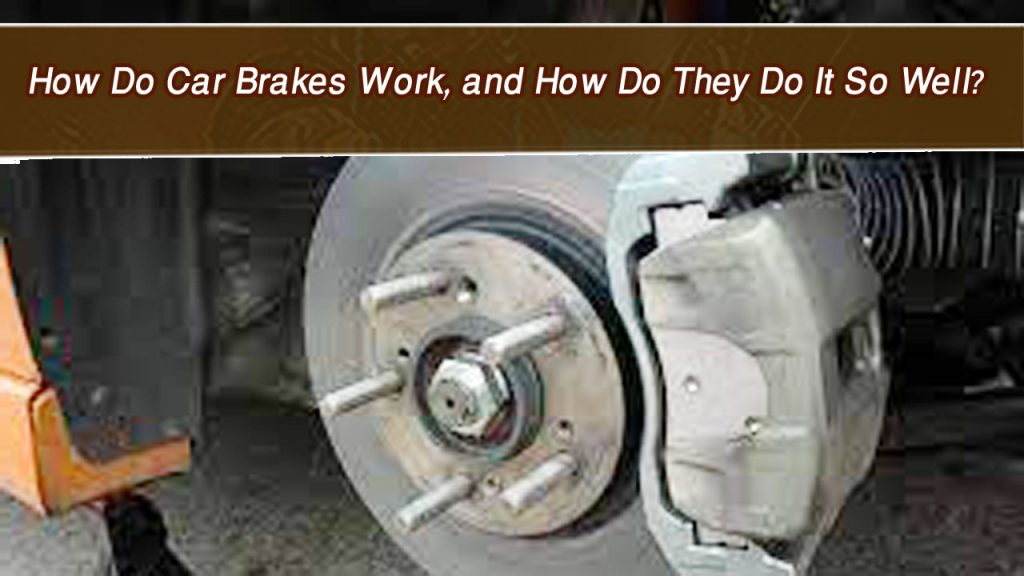Driving a manual car can be a truly rewarding experience, but it does come with a learning curve. One of the trickiest aspects for new drivers—and even for some experienced ones—is braking smoothly. Trust me, I’ve been in that situation where every stop felt like a series of jerks and jolts. If you’re struggling to make your braking seamless, don’t worry—you’re not alone, and it’s entirely fixable.
Smooth braking is essential not only for a comfortable ride but also for safety and maintaining your car’s longevity. In this guide, I’ll share everything I’ve learned about braking smoothly in a manual car, from the basics of using the pedals to advanced tips for mastering your technique.

Image by agirlsguidetocars
Basics of Braking in a Manual Car
To brake smoothly, it’s important to understand how a manual car works. In a manual transmission vehicle, you’re in control of both the clutch and the brake. These two pedals work together, and how you use them affects the smoothness of your stops.
The key lies in knowing when to press the clutch, when to use the brake, and how to transition between the two without creating unnecessary jerks or stalls.
Why Is Smooth Braking Important?
Smooth braking isn’t just about comfort; it’s about safety and efficiency, too. Here’s why it matters:
- Passenger Comfort: Jerky braking can make your passengers uncomfortable and cause motion sickness.
- Vehicle Longevity: Abrupt stops can wear down your brake pads, clutch, and transmission faster.
- Fuel Efficiency: Smooth braking and proper gear transitions can help improve fuel economy.
- Safety: Controlled braking reduces the risk of skidding, especially on wet or slippery roads.
Step-by-Step Guide to Braking Smoothly
Braking smoothly in a manual car requires a combination of skill and awareness. Here’s a detailed guide:
Observe and Plan Ahead
Smooth braking starts with anticipating what’s ahead. Keep your eyes on the road and look for traffic signals, stop signs, or potential obstacles. By planning your stops in advance, you can avoid abrupt braking.
Release the Accelerator Gradually
When you see that you need to slow down, gently lift your foot off the accelerator. This allows the car to decelerate naturally, reducing the work your brakes need to do.
Use Engine Braking
Engine braking is when you use the car’s gears to slow it down instead of relying solely on the brake pedal. To do this, downshift to a lower gear as your speed decreases. This helps control your speed and reduces wear on your brakes.
Apply the Brake Pedal Gently
When it’s time to use the brakes, press the pedal gently and steadily. Avoid stomping on the pedal unless it’s an emergency. Gradual pressure helps maintain a smooth stop.
Press the Clutch at the Right Time
One of the most critical steps in braking smoothly is knowing when to press the clutch. If you’re coming to a complete stop, press the clutch just before the car’s RPM drops too low to prevent stalling.
Combine Clutch and Brake Pedals
For a smooth stop, coordinate the clutch and brake pedals. As you slow down, continue pressing the brake pedal while fully depressing the clutch to disengage the engine from the wheels.
Avoid Panic Braking
In non-emergency situations, give yourself plenty of time to slow down. Slamming the brakes suddenly can cause jerking, even if you press the clutch correctly.
Common Mistakes to Avoid
When learning to brake smoothly in a manual car, it’s easy to make mistakes. Here are some to watch out for:
- Pressing the Clutch Too Early: Pressing the clutch before braking disengages the engine, which can lead to uncontrolled coasting.
- Using Only the Brake Pedal: Neglecting engine braking puts extra strain on your brake pads.
- Stomping on the Pedals: Abrupt pedal use leads to jerky movements and uncomfortable stops.
- Forgetting to Downshift: Staying in a higher gear while braking can make it harder to control your speed.
Tips for Mastering Smooth Braking
Once you’ve nailed the basics, here are some advanced tips to refine your technique:
Practice Makes Perfect
The more time you spend driving, the better you’ll get at coordinating the clutch and brake pedals. Practice in a safe, low-traffic area to build confidence.
Learn to Feather the Clutch
“Feathering” the clutch means using it gently to find the engagement point. This is especially helpful when braking to a near-stop but not completely stopping, such as in stop-and-go traffic.
Pay Attention to RPM
Watch your car’s tachometer to monitor RPM. Downshift before the engine starts to struggle, which usually happens when RPM drops below 1,000.
Keep a Light Foot
Your foot pressure on the brake pedal should be smooth and gradual. Avoid sudden or heavy pressure unless it’s an emergency.
Clutch and Brake Coordination
| Situation | Action |
|---|---|
| Slowing down for a turn | Release accelerator, downshift, apply brake lightly |
| Coming to a complete stop | Apply brake, press clutch before engine stalls |
| Stop-and-go traffic | Feather clutch, use light brake pressure |
How Smooth Braking Saves Your Car
Proper braking techniques do more than make your ride comfortable; they also protect your car’s components. Here’s how:
- Brake Pads: Gradual braking reduces wear and tear, extending the life of your pads.
- Clutch: Using the clutch at the right time prevents unnecessary slipping and wear.
- Transmission: Proper downshifting reduces strain on the gearbox.
- Fuel Economy: Engine braking and smooth stops optimize fuel usage.
Advanced Techniques for Experienced Drivers
If you’re already comfortable with basic braking, you can try these advanced techniques:
- Heel-to-Toe Downshifting: This racing-inspired method allows you to downshift while braking smoothly. It takes practice but can be highly effective.
- Trail Braking: Used in corners, this technique involves braking lightly while turning to maintain control and balance.
Troubleshooting Common Issues
Problem: Jerky Stops
Solution: Pay attention to the timing of clutch and brake application. Practice releasing the brake pedal more gradually.
Problem: Engine Stalls While Braking
Solution: Press the clutch before the RPM drops too low.
Problem: Uneven Braking
Solution: Check your brake pads and rotors for wear. Uneven braking might indicate a mechanical issue.
Final Thoughts
Learning how to brake smoothly in a manual car takes time, patience, and practice, but it’s a skill worth mastering. Not only will it make your driving experience more enjoyable, but it will also enhance your safety and keep your car in great condition.
Remember, the key is coordination—between your clutch, brake, and accelerator. Take it slow, practice regularly, and you’ll get the hang of it. Smooth braking is not only a sign of a skilled driver but also a way to extend the life of your car and ensure a comfortable ride for everyone on board.
FAQs
Why is my car jerking when I brake in a manual car?
This could happen if you’re pressing the clutch too late or braking too abruptly. Focus on timing your clutch and brake pedal use more precisely.
Should I always press the clutch when braking in a manual car?
No, only press the clutch if your RPM is dropping too low or if you’re coming to a complete stop.
Can I use engine braking to slow down?
Yes, engine braking is an effective way to reduce speed and minimize wear on your brake pads.
Is smooth braking harder in a manual car than in an automatic?
It can be, since you have to manage both the clutch and brake pedals. With practice, though, it becomes second nature.
Does braking in neutral damage the car?
Braking in neutral isn’t ideal because it disengages the engine, giving you less control over the car. Use your gears and brakes together for better results.


